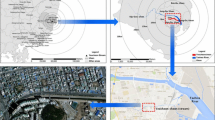Abstract
The aim of this study was to estimate the values to protect the health of the Great Barrier Reef (GBR) at the national level and to examine the effects of distance decay on valuation estimates. Two choice-modelling experiments were conducted in six locations: a regional town within the GBR catchment area (Townsville); Brisbane, the state capital approximately 450 km from the southern limit of the GBR; and four other capital cities (Sydney, Melbourne, Adelaide and Perth) ranging from nearly 1,000 km to over 4,000 km from Brisbane. Value estimates from a pooled model suggest that the average WTP across Australian households is $21.68 per household per annum for 5 years, and that those values are higher for respondents with higher levels of education and income, respondents who live in Queensland, respondents who live further away, and respondents who plan to visit more often in the future. For this nationally important iconic asset, apparent distance decay effects appear to be explained by variations in future usage and state responsibility, rather than proximity.
Similar content being viewed by others
References
Bateman I, Langford I (1997) Non-users’ willingness to pay for a national park: an application and critique of the contingent valuation method. Reg Stud 31(6): 571–582
Bateman I, Cooper P, Georgiou S et al (2005) Economic valuation of policies for managing acidity in remote mountain lakes: examining validity through scope sensitivity testing. Aquat Sci 67(3): 274–291
Bateman I, Day B, Georgiou S et al (2006) The aggregation of environmental benefit values: welfare measures, distance decay and total WTP. Ecol Econ 60: 450–460
Boxall P, Adamowicz WL, Moon A (2009) Complexity in choice experiments: choice of the status quo alternative and implications for welfare measurement. Aust J Agric Res Econ 53(4): 503–519
Concu G (2007) Investigating distance effects on environmental values: a choice modelling approach. Aust J Agric Res Econ 51: 175–194
Czajkowski M, Hanley N (2009) Using labels to investigate scope effects in stated preference methods. Environ Resour Econ 44(4): 521–535
Furnas M (2003) Catchments and corals: terrestrial runoff to the Great Barrier Reef. Australian Institute of Marine Science and CRC Reef Research Centre, Townsville
Garnaut R (2008) The Garnaut climate change review. Cambridge University Press, Cambridge
Great Barrier Reef Marine Park Authority (GBRMPA) (2009) Great Barrier Reef outlook report (2009). Great Barrier Reef Marine Park Authority, Townsville
Hanley N, Schlapfer F, Spurgeon J (2003) Aggregating the benefits of environmental improvements: distance decay functions for use and non-use values. J Environ Manage 68: 297–304
Haynes D, Brodie J, Waterhouse J, Bainbridge Z, Bass D, Hunt B (2007) Assessment of the water quality and ecosystem health of the Great Barrier Reef (Australia): conceptual models. Environ Manage 40: 993–1003
Johnston RJ, Duke JM (2007) Willingness to pay and policy process attributes. Am J Agric Econ 89(4): 1098–1115
Johnston R, Duke J (2009) Willingness to pay for land preservation across States and jurisdictional scale: implications for benefit transfer. Land Econ 85: 217–237
Loomis J (1996) How large is the extent of the market for public goods: evidence from a nationwide contingent valuation survey. Appl Econ 28(7): 779–782
Lough J (2007) Climate and climate change on the Great Barrier Reef. In: Johnson J, Marshal P (eds) Climate change and the Great Barrier Reef: a vulnerability assessment. Great Barrier Reef Marine Park Authority and Australian Greenhouse Office, Canberra
Morrison M, Bennett J (2004) Valuing New South Wales rivers for use in benefit transfer. Aust J Agric Res Econ 48: 591–611
Pate J, Loomis J (1997) The effect of distance on willingness to pay values: a case study of wetlands and salmon in California. Ecol Econ 20: 199–207
Poe G, Giraud K, Loomis J (2005) Computational methods for measuring the differences of empirical distributions. Am J Agric Econ 87(2): 353–365
Rolfe J, Bennett J (2002) Assessing rainforest conservation demands. Econ Anal Pol 32(2): 51–67
Rolfe J, Bennett J (2009) The impact of offering two versus three alternatives in Choice Modelling experiments. Ecol Econ 68: 1140–1148
Rolfe J, Bennett J, Louviere J (2002) Stated values and reminders of substitute goods: testing for framing effects with choice modelling. Aust J Agric Res Econ 46: 1–20
Salazar S, Menedez L (2007) Estimating the benefits of an urban park: does proximity matter?. Land Use Pol 24: 296–305
Sutherland R, Walsh R (1985) Effect of distance on the preservation value of water quality. Land Econ 61: 281–291
van Bueren M, Bennett J (2004) Towards the development of a transferable set of value estimates for environmental attributes. Aust J Agric Res Econ 48: 1–32
Von Haefen RH, Massey DM, Adamowicz WI (2005) Serial nonparticipation in repeated discrete choice models. Am J Agric Econ 87(4): 1061–1076
Windle J, Rolfe J (2011) Comparing responses from internet and paper-based collection methods in more complex stated preference environmental valuation surveys. Econ Anal Policy 41(1): 83–97
Wolanski E, De’ath G (2005) Predicting the impacts of present and future human land-use on the Great Barrier Reef. Estuar Coast Shelf S 64: 504–508
Author information
Authors and Affiliations
Corresponding author
Rights and permissions
About this article
Cite this article
Rolfe, J., Windle, J. Distance Decay Functions for Iconic Assets: Assessing National Values to Protect the Health of the Great Barrier Reef in Australia. Environ Resource Econ 53, 347–365 (2012). https://doi.org/10.1007/s10640-012-9565-3
Accepted:
Published:
Issue Date:
DOI: https://doi.org/10.1007/s10640-012-9565-3




